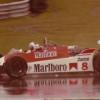I have started making a very simple mathematical model to compare Formula 1 drivers. My model is based on comparing the outright pace of the Formula 1 drivers to their teammates, then comparing them all through drivers with shared teammates. So far, I have created a model for the drivers from 2012-2022. I plan to extend this all the way back to 1950 eventually, although I think it probably isn’t massively useful for comparing drivers for different eras due to the fact that drivers are so much closer together nowadays than in the past. This is due to things like telemetry, simulators, data and training, rather than them actually being better drivers, so while Mike Hawthorn would probably be around 2% slower than Alberto Ascari or Juan Manuel Fangio, and Nikita Mazepin may be only 1.5% slower than Max Verstappen, that doesn’t mean that Mazepin is a better driver than Hawthorn, it just means he is closer to the ultimate pace of the car, which is easier to do in the modern era. I think it is more useful for comparing drivers of similar eras, but not to the extent that it can be taken as a fact, because it is also necessary to look at the context behind the results and explain why some drivers may be overrated or underrated by the model. The flaws in the model are obvious; driver level fluctuates year on year and while these fluctuations are limited by taking the average across all the seasons, there are still random surprise results which can skew the results for drivers with not many teammate connections. The notes will try to analyse this. Also, this does not include race pace at all, it is all about qualifying (with practice times used when there are no representative qualifying times for a driver).
Method
The first step is to find the ‘supertimes’ for every driver, for each season. This involves taking the fastest lap by each driver for each weekend and turning it into a percentage of the overall fastest lap of the weekend. Usually, this will be the qualifying laps but if a driver has an issue in qualifying, it goes back to their fastest practice time in order to reduce the effect of anomalous results in qualifying. Each driver than has a supertime for each weekend, with the driver with the fastest lap of the weekend having a score of 100, and then the supertimes for every weekend of the season are averaged to get an overall score for the season for every driver/car combination. Some years, I had to calculate this myself, and other years Autosport was kind enough to do it for me. These are the overall supertimes for the 2022 season, for example:

The next step in the process is to put these results into the mathematical model. Every driver starts with a base score of 100. Then in the next column, for Max Verstappen for example, I would put Sergio Perez’s score in column 1 (100), add his score for 2022, then take away Perez’s score for 2022. I do this for every one of his seasons and teammates in those seasons and average them. I do this for every driver, and they all get a new score for the second column of the table. (One rule is that two drivers must have been teammates for at least a third of the season to go into the mathematical model). Next, I drag this formula across in the Excel spreadsheet many, many times. If you were to do it with just two drivers, they would just oscillate between two scores, so on one column later on, I do the average of these scores. For example, if one driver was 0.5% faster than the other, that driver would oscillate between 99.5 and 100, the other would oscillate between 100 and 100.5, so the results would be 99.75 and 100.75, demonstrating correctly the 0.5% gap between the two drivers. But once there are enough teammate connections, all the values tend towards a point, so this averaging is usually not necessary, and they all get a score just from the original formula. These range from just below 100 to just above 100, but the actual number is irrelevant, the important bit is the gaps between the drivers. So that is how the mathematical model works, here are the results.
Drivers who are not connected to the main teammate web.
Some drivers are not connected to the main teammate web so are ranked separately. Most of these will join the main list once I add more seasons, but others will not.

The Caterham drivers from 2012 are not connected to the rest of the grid but will be once I add previous seasons, starting with 2011 when Petrov was teammate to Bruno Senna. These results show that Kovalainen was, on average, 0.290% faster than Petrov in 2012.

The 2012 Marussia drivers and the 2013 Caterham drivers will also be connected to the rest of the grid once I get back to 2009, when Glock was teammate to Jarno Trulli. Glock was 0.272% faster than Pic in 2012, and Pic was 0.569% faster than Van Der Garde in 2013. I was surprised at this large gap between the Caterham drivers in 2013 but trusted the Autosport results.

The 2012 HRT drivers will be connected to the rest of the grid once I get back to 2010, when De La Rosa was teammate to Kobayashi. De La Rosa was, as expected, 0.464% faster than Karthikeyan in 2012 on average.

The 2015 Manor drivers will never be connected to the rest of the grid unless, by some miracle, one of them gets another F1 drive. Will Stevens did race once alongside Kamui Kobayashi at Caterham in Abu Dhabi 2014, but this isn’t enough for a representative ranking. Stevens was 0.444% faster than Merhi in 2015, but the Manor was so far off the rest of the grid it is hard to know how good either of them really were. But they probably were the two weakest drivers on the grid.

The 2014 Marussia drivers will also never be connected to the rest of the grid, but Jules Bianchi, tipped to drive for Sauber in 2015 and perhaps Ferrari in the future before his fatal accident at Suzuka in 2014, was around 0.712% faster than Max Chilton, who was generally considered to be among the weakest drivers on the grid.
The overall ranking (2012-2022)
1 Lando Norris FASTEST
2 Max Verstappen +0.037%
3 Charles Leclerc +0.201%
4 Carlos Sainz +0.266%
5 Daniel Ricciardo +0.310%
6 Nico Hulkenberg +0.356%
7 Fernando Alonso +0.410%
8 Nico Rosberg +0.467%
9 Lewis Hamilton +0.509%
10 George Russell +0.513%
11 Pierre Gasly +0.542%
12 Paul di Resta +0.549%
13 Valtteri Bottas +0.579%
14 Alexander Albon +0.596%
15 Sergio Perez +0.601%
16 Kamui Kobayashi +0.603%
17 Esteban Ocon +0.627%
18 Adrian Sutil +0.639%
19 Michael Schumacher +0.646%
20 Sebastian Vettel +0.664%
21 Daniil Kvyat +0.683%
22 Felipe Massa +0.691%
23 Jean-Eric Vergne +0.734%
24 Pascal Wehrlein +0.740%
25 Jenson Button +0.744%
26 Romain Grosjean +0.751%
27 Antonio Giovinazzi +0.795%
28 Esteban Gutierrez +0.799%
29 Kimi Raikkonen +0.844%
30 Kevin Magnussen +0.865%
31 Felipe Nasr +0.870%
32 Stoffel Vandoorne +0.887%
33 Marcus Ericsson +0.916%
34 Sergey Sirotkin +0.931%
35 Mark Webber +0.950%
36 Brendon Hartley +0.952%
37 Pastor Maldonado +0.956%
38 Mick Schumacher +0.995%
39 Zhou Guanyu +1.023%
40 Lance Stroll +1.054%
41 Yuki Tsunoda +1.190%
42 Jolyon Palmer +1.236%
43 Nicholas Latifi +1.285%
44 Robert Kubica +1.292%
45 Rio Haryanto +1.473%
46 Nikita Mazepin +1.557%
47 Bruno Senna +1.779%
Notes
These notes are supposed to try and explain the position of the driver in the ranking and why it might be higher or lower than expected. But it is also possible that my musings are all based on bias, and the results shown are totally accurate as they have no bias at all. These results effectively summarise exactly what we are seeing on track, and these notes are explaining why this may be misleading.
- Lando Norris. This is a surprise that Lando Norris ranks at number one, considering he is yet to win a Grand Prix. The main reason for his high ranking is the huge gap between himself and Daniel Ricciardo in 2021 (0.416%) and 2022 (0.676%). The model considers this to be larger than the expected gap between them, as shown by the overall results, due to Norris having a very small advantage over Carlos Sainz in 2019-20 (0.030%) and Ricciardo doing better in other years, but the lack of other data for Norris probably inflates his score here, and I think it is unlikely that he is actually the fastest driver on the grid. Unfortunately, as he is currently teammate to a rookie in Oscar Piastri, his ranking will remain approximately the same in the coming years until he gets a representative teammate.
- Max Verstappen. There have been suggestions over the years of Red Bull building their cars to suit Max Verstappen’s driving style, thus exaggerating the gap between himself and his teammates, and perhaps causing him to have an inflated score here. However, it makes more sense that Verstappen should rank at the top considering he is widely considered to be the current best driver on the grid, and has totally dominated strong teammates in Perez (0.615%), Albon (0.767%) and Gasly (0.695%) recently. I think these differences are probably not far off being the genuine difference in their levels, even without a car that suits Verstappen, and he deserves his place this high on the list.
- Charles Leclerc. It may be that Leclerc’s ranking is also higher than is should be because of the fact that he destroyed a Sebastian Vettel in 2020 (0.702%) who was far from his best, although this model doesn’t really rate Vettel too highly just yet. He has also beaten Carlos Sainz in 2021-22 for outright pace (0.149%), actually by a greater margin than the overall gap between them, which gives him a high score due to Sainz’s excellent record against Verstappen and Norris.
- Carlos Sainz. Although he hasn’t beaten many teammates in his career, Sainz has been up against all of the top three on this list, all of whom have been accused of having cars that suit their driving styles better than their teammates, and has come very close to all three (0.030% to Norris, 0.100% to Verstappen and 0.149% to Leclerc), hence his position in fourth on the ranking. Sainz also beat Daniil Kvyat comprehensively in 2016 (0.420%) and less comprehensively in 2017 (0.108%), and was beaten by Nico Hulkenberg in 2018 (0.038%), which drags his score down a little.
- Daniel Ricciardo. Ricciardo ranks highly due to being much closer to Verstappen than most of his other teammates, as well as beating Hulkenberg in 2019 (0.180%), Vettel in 2014 (0.370%) and Ocon in 2020 (0.199%) and Vergne in 2012-2013 (0.419%). His terrible record against Norris in 2021-2022 (0.546%) brings his score down slightly, but it has a greater effect in improving Norris’ score as he has fewer other teammate connections.
- Nico Hulkenberg. This score may seem way too high considering Hulkenberg has never even been on the podium, but actually it is consistent with a lot of his gaps to teammates. He dominated Palmer (1.209%) and Gutierrez (0.618%) to a far greater extent than Magnussen and Grosjean did. Did he catch them at a good time or was this the genuine advantage he had over them? He also beat Perez in all three seasons (0.126%), edged out Sainz (0.038%) and wasn’t far off Ricciardo. Qualifying pace is probably his strongest area, and he perhaps isn’t given enough credit in this regard. Hulkenberg’s domination of Magnussen in qualifying in 2023 will further cement his position towards the top of this list.
- Fernando Alonso. This is a much lower ranking than is to be expected for Alonso, perhaps in part due to the use of many of his less impressive seasons and not yet having got into his better years in the 2000s, while the likes of Massa and Button are also currently not rated too highly as their best seasons are yet to be added to the model. Alonso wasn’t as far ahead of Ocon as might be expected (0.185%), due to his age, but dominated Massa (0.327%) and this will be shown more in the model as more years are added.
- Nico Rosberg. As Schumacher has no other teammate connections in this time period, Rosberg’s entire ranking is based off Lewis Hamilton, and while he was just behind him in 2013 (0.030%) and 2015 (0.159%), he had a greater advantage in 2014 (0.223%) and 2016 (0.135%) so ranks ahead overall. This is partly due to Hamilton having more bad luck in those seasons in qualifying which just about tilts the balance, but the two were actually very evenly matched in qualifying and Hamilton’s greater advantage came in the races, which are not included here. His ranking will be inaccurately inflated once more years are added due to him beating a Schumacher when he was past his best.
- Lewis Hamilton. Hamilton’s ranking is far too low in this model, but is likely to improve once the 2000s are added and him beating Alonso, dominating Kovalainen, and Button and Rosberg’s strong careers are added to the model. He wasn’t very far ahead of Bottas during their time as teammates (0.066%), with the greater difference being made in the races, and actually ranks just behind Rosberg because of 2014 and 2016, when he had more bad luck in qualifying sessions, although again the difference in qualifying was actually very small. Hamilton was also outpaced by Russell in 2022 (0.158%), partly due to the trialling of different setups, and Latifi’s terrible season made Russell look worse compared to Albon, bringing Hamilton’s ranking down in that regard as well.
- George Russell. Russell’s ranking is inflated by beating Hamilton in 2022 on supertimes, although he was generally narrowly outperformed by his teammate that year. But his ranking is mostly brought down by having a lesser gap to Latifi (0.692%) than Albon did (0.850%) during his Williams years, although Latifi appeared to be having a much worse season in 2022 than he had in 2020-2021.
- Pierre Gasly. As Tsunoda and Hartley have no other teammate connections, Gasly’s rating is purely based off his results relative to Verstappen and Kvyat, and while he had a poor half-season at Red Bull (0.695% down on Verstappen), the way he comfortably outperformed Kvyat (0.286%) showed that this was an unusually bad performance, and he is actually better than that half-season would suggest.
- Paul di Resta. Perhaps Nico Hulkenberg wasn’t at his best in 2012 and so Di Resta’s ranking is inflated by being closer to him than most (0.062%), while Hulkenberg himself is perhaps a little too high anyway. But Di Resta’s score is pulled down again a little by being outpaced by Sutil in 2013 (0.042%). Either way, he may have been overrated by this model, but it was probably harsh that he lost his drive altogether in 2013.
- Valtteri Bottas. Over their five years as teammates, Bottas was actually very close to Hamilton on outright pace (0.066%), (although it was in the races that the gap widened between them), and this is shown in the model. Bottas’ score also improves due to his ability to beat Massa over their three years as teammates (0.245%), although it is hurt by being outpaced by the mercurial Pastor Maldonado when he was a rookie (0.039%). Bottas’ score is probably a little too low here and will improve due to Hamilton’s doing likewise as a result of including more seasons.
- Alexander Albon. While Albon was beaten the most comprehensively of all Verstappen’s teammates, he earns a decent score here because Verstappen is rated so highly, and because he outperformed Kvyat in 2019 (0.206%) and mainly because in 2022 he was a long way ahead of Latifi (0.850%), further ahead than Russell had been in previous seasons (0.692%). Perhaps this means his score is a little too high as Latifi seemed to be having his worst season in 2022.
- Sergio Perez. Perhaps qualifying has always been his weakest area, as he outscored Hulkenberg in two of their three seasons as teammates but was outpaced by him on all three occasions (0.126% overall), and also struggled to get the better of Ocon in 2017-18 (still edging him by 0.035%), while he has particularly struggled in this area since joining Red Bull. His ranking is also hurt by not being as far ahead of Stroll for outright pace as others (0.355%). I think this ranking is probably about right for Perez.
- Kamui Kobayashi. Another driver who was forced out of Formula 1 too soon, but Kobayashi’s ranking is probably a bit too high here as he was teammate to Perez in his second season, being beaten by him (0.195%), and Ericsson as a rookie when he beat him by a comfortable margin (0.506%). Facing both drivers at their peak would probably have led to worse results for Kobayashi, although he was still good enough to be a solid midfield driver during the 2010s.
- Esteban Ocon. Ocon looked a potential top driver during his initial years with Force India when he was just slightly slower than Perez (0.035%), although this idea seemed to end when he was comfortably outpaced by Ricciardo in 2020 (0.199%), and again he was a little behind a declining Alonso at Alpine (0.185%). His score is also hurt by being narrowly outpaced by Wehrlein as a rookie in his half-season with Manor in 2016 (0.048%), which is unrepresentative due to the comparative lack of preparation. This model would suggest that he should have been a little behind Gasly in 2023 which has not been the case, although his experience with the team may have played a part here, so his ranking will probably improve once 2023 is added.
- Adrian Sutil. Narrowly outpaced Di Resta in 2013 (0.042%) to improve his score, but then it is hurt by being just a small amount ahead of Gutierrez in 2014 (0.029%) with Sauber. I think his actual level was shown more in 2013 as the 2014 Sauber was extremely uncompetitive, although Di Resta is perhaps a little overrated by the model so overall, I would suggest that this placing for Sutil is about right.
- Michael Schumacher. Obviously, this is not peak Michael Schumacher, it only includes the last of his comeback years in 2012. Even so, I think Schumacher has been slightly underrated by the model because I think Hamilton, and by extension Rosberg, the only driver whose ranking affects Schumacher’s, have been underrated by the model. Once the 2000s and 1990s are added, Schumacher will surely find himself towards the top of the list, and then Rosberg’s score will consequently be misleadingly inflated.
- Sebastian Vettel. Perhaps the biggest surprise in the ranking is the low placing of the champion of the first two seasons in the sample. His best seasons were with Red Bull and Mark Webber doesn’t yet have any other teammate connections, so for now these years effectively don’t count. He also did well alongside Kimi Raikkonen at Ferrari (winning overall by 0.223%), but Raikkonen is rated poorly by the model. Vettel was also surprisingly beaten comfortably by Ricciardo and Leclerc in 2014 (0.370%) and 2020 (0.702%), and was past his best when he faced Stroll (0.249%). His score will improve once the best years of Webber and Raikkonen are implemented to the model, but it is unlikely he will find himself right towards the top. Perhaps the four world championships flatters Vettel’s ability.
- Daniil Kvyat. Despite seeming to underperform for many years at Toro Rosso, the average supertimes would suggest that Kvyat didn’t do as badly as the points tables would suggest, edging out Vergne in 2014 (0.061%) and being close to Sainz in 2017 (0.108%), albeit less so in 2016 (0.420%). However, he was beaten comprehensively by Gasly in 2019-20 (0.286%), so does rank below all these drivers. But perhaps Kvyat was better than he is generally given credit for.
- Felipe Massa. Some speculate that Massa was never the same driver after his Hungary accident in 2009 so this model doesn’t yet include his best seasons. During the period, Massa was quite soundly beaten by Alonso in 2012-13 (0.327%), and also by Bottas across 2014-16 (0.245%). However, Stroll had a particularly poor season in 2017 so Massa’s domination of him (0.851%) inflates his ranking somewhat. But as his other teammates have probably been underrated, I would suggest that Massa’s ranking is about right, or slightly too low, for this period, and will improve once the late 2000s are included.
- Jean Eric Vergne. Qualifying was always Vergne’s biggest weakness in Formula 1, despite his excellent pole record in Formula e, and so he had quite a significant gap to Ricciardo (0.419%) and was also narrowly beaten by Kvyat in 2014 (0.061%). Although his race pace was better, this placing for outright speed is probably about right for Vergne. Although he was teammate to Ricciardo during his early years, Vergne was even less experienced so could have improved by a similar amount to Ricciardo had he been given more years in Formula 1.
- Pascal Wehrlein. Despite only having two seasons with backmarker teams in Formula 1, Wehrlein was fairly highly rated and was considered unlucky to lose his drive at the end of 2017. In his rookie season, he comfortably outpaced Rio Haryanto in the first half of the year (0.732%) but managed to just edge Esteban Ocon as well in the second half (0.048%), which means his ranking is probably too high as he had far more preparation than Ocon and probably wouldn’t have beaten him otherwise. Wehrlein’s second season with Sauber was less impressive and Ericsson was very close to his level, if still a little behind (0.013%).
- Jenson Button. Another surprise of the model is the low placing of a world champion in Jenson Button, although his best seasons probably took place before 2012, and while qualifying was never his strong point, he will move up the order once those better seasons are added. Button was quite clearly outpaced by Hamilton in 2012 (0.414%) and by Alonso in 2015-16 (0.328%), and also only just beat Magnussen in 2014 (0.012%) which hurts his ranking, although as all three of the aforementioned drivers are probably underrated by the model, it follows that Button is as well, and he did manage to beat Perez in 2013 (0.134%).
- Romain Grosjean. Although he had a reputation for crashing a lot, over his career, Grosjean was also very fast in qualifying, so it is surprising that he places so low here. He managed to narrowly beat Raikkonen for outright pace across 2012-13 (0.011%) although in the races he was well behind, yet Raikkonen is rated poorly here, and Grosjean also beat Maldonado (0.410%) who was known as a one-lap specialist. His ranking is hurt by struggling to beat Gutierrez by much (0.005%), perhaps because Gutierrez had improved since his Sauber days, but Grosjean also did not like the 2016 Haas at all. And he narrowly held the edge over Magnussen across 2017-20 (0.060%) but Magnussen is rated poorly by the model. Grosjean’s score will improve, and deservedly so, once the extent of Maldonado’s destruction of Senna becomes relevant (when Senna gets other teammates), and once Raikkonen’s better years are included in the model.
- Antonio Giovinazzi. Across their three seasons as Alfa Romeo teammates, Giovinazzi gradually gained the upper hand over Raikkonen and overall was faster than him (0.049%). But this was Raikkonen at the weakest point of his career, just before his retirement, so Giovinazzi is probably a little overrated by the model. But not by much, as Raikkonen himself is very poorly rated based on this time period.
- Esteban Gutierrez. The statistic of scoring just one points finish in his entire career does not do Gutierrez justice, and the 2016 score of 0 points to the 29 of Grosjean is very misleading as for outright pace, Gutierrez was just a very small amount behind Grosjean (0.005%). He was similarly close behind Sutil in 2014 (0.029%) but was beaten by a large amount by Hulkenberg in 2013 (0.618%). I think Gutierrez is a little overrated by the model, as Grosjean and Sutil weren’t performing at their best in those difficult cars, but he wasn’t as bad as the points totals would suggest.
- Kimi Raikkonen. A shockingly low score for a former world champion, but since 2012, qualifying has not been his strongest suit, he has been past his best anyway throughout this period, while his teammates Grosjean, Alonso and Vettel, all of whom beat him, are probably underrated by the model. Raikkonen was beaten by some margin by Alonso in 2014 (0.417%) in a Ferrari that suited his teammate more than him, and was closer to Vettel across 2015-18 (0.223%) although Vettel is not rated too highly here, and neither is Grosjean who narrowly outpaced Raikkonen in qualifying (0.011%) but was much slower for race pace. Raikkonen’s score will improve once his better Ferrari and McLaren years are included, but he is unlikely to feature too near the top of the list.
- Kevin Magnussen. In his rookie season, Magnussen was very close to the level of Button, but that is estimated to be his strongest season and his ranking is hurt badly by only just beating Jolyon Palmer in 2016 (0.043%), the year before Palmer was destroyed by Hulkenberg (1.209%). I would suggest that 2017 was a disproportionately bad year for Palmer and so Magnussen is underrated by the model as a result of this. He was very close to Grosjean’s pace throughout their years as teammates (0.060%), and I think that both Haas drivers from that time should be rated more highly, and they will be once more years are added.
- Felipe Nasr. With two years at Sauber, Nasr’s rating is entirely dependent on Ericsson’s, and in his first season Nasr beat Ericsson (0.223%), who stepped up in 2016 and got the better of Nasr (0.131%), but overall Nasr holds a slight edge (0.046%). Ericsson is probably slightly overrated by being teammate to a rookie Leclerc and a Wehrlein who I think is overrated by the model, so by extension Nasr is also, particularly as 2015 was a particularly bad year for Ericsson.
- Stoffel Vandoorne. Two years of being destroyed by Fernando Alonso (0.477%) ended a promising Formula 1 career that has since been rewarded with a Formula e championship. Vandoorne probably didn’t face Alonso at his absolute peak, but as Alonso is underrated by this model which doesn’t include many of his best seasons, Vandoorne’s placing is probably about right. Once the 2000s are included, Alonso’s score, and by extension Vandoorne’s, will improve and then Vandoorne will probably be overrated by the model.
- Marcus Ericsson. Ericsson was beaten by a significant margin by Kobayashi in 2014 (0.506%), and was also beaten by Nasr in 2015 (0.223%), but he seemed to make a step up in 2016 by beating Nasr (0.131%), then being close to Wehrlein in 2017 (0.013%), but was quite far away from Leclerc in 2018 (0.685%). But I think overall he is slightly overrated by the model, due to Leclerc being a rookie when they were teammates, and Wehrlein being rated too highly due to beating Ocon in unusual circumstances.
- Sergey Sirotkin. Sirotkin’s placing is entirely dependent on Stroll’s, and during his only season, Sirotkin was able to narrowly outpace Stroll (0.123%) so is above him here. But Stroll improved in the seasons after moving to Racing Point, so Sirotkin’s ranking is probably too high here as a result of facing a weaker version of Stroll.
- Mark Webber. The only seasons included here for Webber are 2012 and 2013 when he was outpaced by Vettel by a more significant amount (0.287%) due to not liking the tyres, and for aforementioned reasons, Vettel is rated too low by the model, so combining these two factors means Webber has a ridiculously low rating here. Once earlier seasons are included, he will be much higher as he was better in the years prior to switching to Pirelli in 2011, and Vettel’s score will improve to a more representative level, thus bringing Webber up as well.
- Brendon Hartley. Hartley’s score depends only on Gasly, who he was quite far behind during their season as teammates, and if anything, this ranking flatters Hartley as Gasly was in his first full season in 2018 (0.410%). Admittedly, Hartley was as well, although he had more experience in endurance racing.
- Pastor Maldonado. During the 2012 season, Maldonado was very much touted as a one-lap specialist, when he destroyed Bruno Senna by one of the largest gaps between two teammates in the sampled period (0.822%), although as it was Senna’s final season, it doesn’t affect Maldonado’s score in this ranking. He also narrowly beat Bottas in 2013 (0.039%) but was beaten by Grosjean in 2014-15 (0.410%), who isn’t very highly rated, so this brings Maldonado’s rating down to a very low and unrepresentative ranking. He will correctly be much higher once more seasons are added.
- Mick Schumacher. After destroying Mazepin in his rookie season (0.562%), Schumacher’s rating comes only from the 2022 season, when he was a little behind Magnussen (0.130%), and so this ranking seems about right as Magnussen is probably too low, but wasn’t having his best season in 2022. Schumacher’s main problem was crashing which doesn’t really make much difference in this model. Perhaps he would still be driving for Haas now had Mazepin continued as his teammate beyond 2021.
- Zhou Guanyu. Zhou’s ranking is also based just off one driver, Bottas in 2022, and he was quite far off Bottas (0.444%) but considering it was Zhou’s rookie season, and it wasn’t Bottas at his best, this placing seems quite reasonable.
- Lance Stroll. Although he has gradually improved over his years in Formula 1, Stroll has still rarely shown to be better than the bottom group of drivers on the grid, so it is unsurprising that he ranks low down here, particularly as qualifying has generally been a weakness of his. His 2017 season brings the ranking down as he was a long way off Massa (0.851%), but he fared better against Perez in 2019-20 (0.355%) and also a declining Vettel in 2021-22 (0.249%), but was still behind both drivers.
- Yuki Tsunoda. Tsunoda ranks very low because of his 2021 season when he was a significant distance behind Gasly (1.040%), although he cut this gap in 2022 when it was much closer (0.255%), but the average of the two remains large. In 2023 he seems to have improved further and so his ranking will go up due to the good results relative to Ricciardo.
- Jolyon Palmer. Palmer’s 2017 season mainly brings his score down as he was beaten by Hulkenberg by the single largest gap between two teammates of the entire time period (1.209%), although he clearly wasn’t at his best that season and was far closer to Magnussen in 2016 (0.043%), thus bringing Magnussen’s score down almost as much as it brings his up.
- Nicholas Latifi. In general, Latifi didn’t do too badly in 2020-21 relative to his teammate (0.692%), considering George Russell has gone on to run Lewis Hamilton closely at Mercedes. But perhaps Abu Dhabi 2021 mentally broke him, because by comparison, 2022 was an awful season and he had an even larger gap to Alex Albon (0.850%) who probably isn’t as strong a driver overall. Therefore, it is unsurprising that he is among the lowest ranked drivers.
- Robert Kubica. Once peak Kubica’s seasons are added to this ranking, George Russell’s score will be disproportionately improved as Kubica in 2019 was nowhere near the level he had once been, and that is the only season that counts to this list so far. He was comprehensively beaten by a rookie George Russell (0.779%).
- Rio Haryanto. Haryanto raced just half a season with Manor in 2016 and while he sometimes outqualified Wehrlein, his overall supertime was some way off (0.732%) and so he ranks among the lowest of all the drivers who have raced since 2012, which isn’t too surprising.
- Nikita Mazepin. Considering Mick Schumacher, who had so clearly dominated Mazepin in the same car in 2021, lost his seat in Formula 1 just one year later, it should be no surprise that Mazepin ranks right towards the bottom of the list, having been comfortably outpaced by Schumacher in his one season in Formula 1 (0.562%).
- Bruno Senna. Although he should be close to it, it is overly harsh that Bruno Senna ranks right at the bottom of the list, because the only one of his seasons included here is 2012 when, in qualifying at least, he was destroyed by Maldonado (0.822%). But the full extent of Maldonado’s one-lap pace hasn’t yet been realised by this model, which considers him a below average driver and so thinks that Senna is terrible. Once Senna’s 2010 and 2011 seasons are included, he will rightly move up the table a little, and Maldonado will correctly move much higher even if his crashing and Senna’s lack of pace meant that the 2012 Williams was effectively wasted in terms of points scored, but Senna is not the worst driver since 2012.
So that is my mathematical model, riddled with flaws of course, although the major positive of this model is that it is extremely simple and so it is very obvious why any surprise results have taken place. Any ideas of how to improve it would be welcome although I don’t think it is possible to create a particularly accurate model and just think it is interesting as a rough baseline for the drivers’ level. Any results for supertimes of other seasons would also be greatly appreciated.
This will be updated in the future as I add the 2023 season and many more years from before 2012. I hope you enjoyed reading it, and, I emphasise again because I know someone will, please don't think that I am claiming these results to be in any way definitive. It is just meant to be interesting.
Edited by F1Frog, 03 November 2023 - 13:24.






























